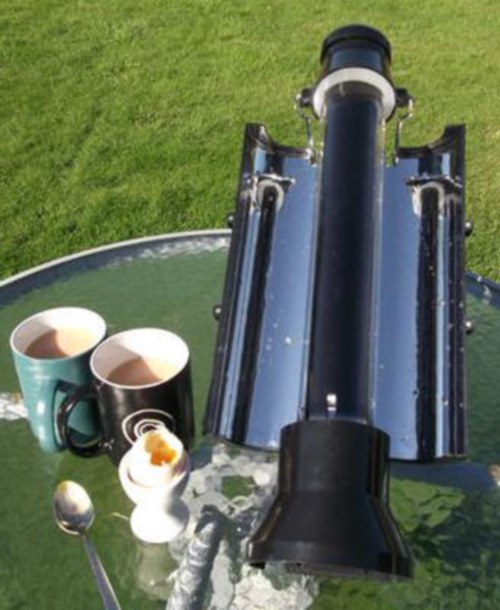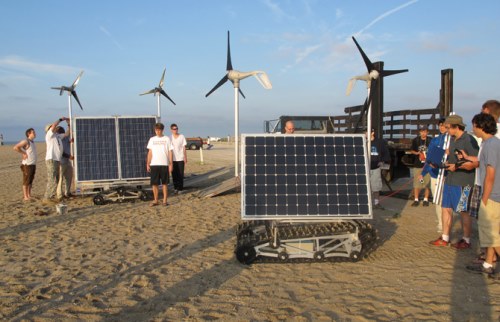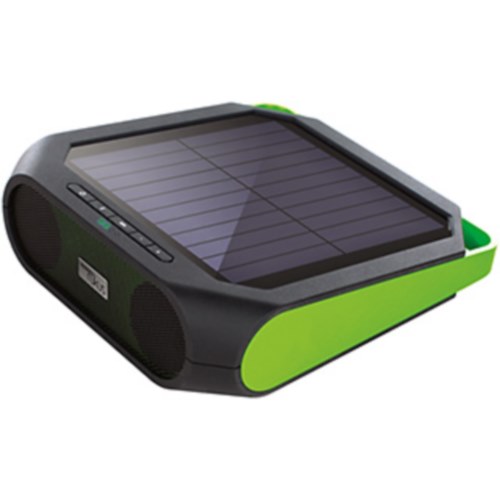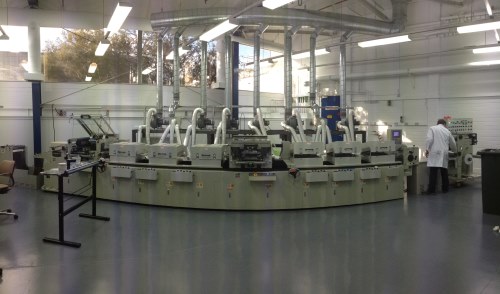We hear a lot about why it’s beneficial to “go green” these days. For starters, using the sun to power our stuff is said to be cheaper, cleaner, and safer than electric.
Engineers have discovered new ways to implement solar energy in to our everyday lives. A Walgreens in Illinois was built using over 800 solar panels to power it and even Apple has taken tremendous strides to make all of its datacenters powered by solar energy.
Here are some other basic technologies that have taken the solar approach.
1. Solar Kettle

Solar Kettle heats up water for coffee. (Image via Contemporary Energy Ltd.)
You’re used to boiling your water on the stove, but British engineer James Bentham created the Solar Kettle that you can use to boil your water using just sunlight. The Solar Kettle converts 60% of the sun’s energy into useful heat energy by employing thermal technology that does not require any electricity.
This device is ideal for the outdoors and in can be used in emergency situations to sterilize and purify other water sources.
2. Solar rover (GROVER)

Students from NASA Goddard engineering camp test prototypes of GROVER. (Image via NASA)
NASA has created a lot of rovers to explore out-of-this-world terrain, but now the space agency has come up with a solar-powered rover called the Greenland Rover and Goddard Remotely Operated Vehicle for Exploration and Research (GROVER) to explore Greenland (a not-so-out-of-this-world terrain).
GROVER is an autonomous robot that can runs entirely on the sun’s energy by using “V” shaped solar panels that allow it to collect the sun’s energy, as well as the sunlight that is reflected off of the ice sheets that are native to Greenland. Using this technology allows the rover to operate in clean environments without adding air pollution.
3. Solar airplane

Solar plane taking off on mission 2013 to Phoenix, AZ. (Image via Solar Impulse)
Solar Impulse, a solar-powered aircraft project led by Swiss pilot Bertrand Piccard and businessman Andre Borchberg, began in 2003. By 2009, Piccard and 50 specialists had developed a solar-powered airplane. (Two models have since been created: HB-SIA and HB-SIB.)
Although not the first solar airplane ever created, it has been the most monumental. On May 23, 2013, the manned solar plane set a record, landing in Texas after an 18-hour flight from Arizona.
The plane consists of a carbon fiber frame, monocrystalline silicon solar panels, and silver carbon wrapping. It has a wingspan of 208 feet and weighs just about 3,500 lbs.
4. Solar Bluetooth speakers

Eton Rugged Rukus. (Image via Eton)
Rugged Rukus, a set of solar-powered Bluetooth speakers, released by the company Eton, run on just sunlight. Five hours of sunlight on the speaker’s solar panel can charge the battery from empty to full. The battery can last up to eight hours on one full charge.
Need to charge your phone too? No problem, just use a USB cable to plug it in to the speakers.
5. Solar printing

VICOSC’s new solar cell printer installed at CSIRO. (Image via CSIRO)
Solar printing doesn’t mean a printer runs on solar power, but rather that people are actually using a printer to produce solar cells.
The printer was developed by the Victorian Organic Solar Cell Consortium (VICOSC), a collaboration between the Commonwealth Scientific and Industrial Research Organization (CSIRO), the University of Melbourne, Monash University, and industry partners.
The printer, worth $200,000, is capable of printing solar cells about 30 cm wide at a rate of one cell every two seconds. It uses semiconductor inks to print cells directly onto paper-thin flexible plastic or steel. These cells can produce anywhere from 10 to 50 watts of power per square meter.
This technology could potentially be incorporated into advertising signage, powering lights, or laptops as a backup power source.
Keep an eye out for more traditional technologies that are flipping the switch to solar power.
Do you have solar-powered ideas? Share them with us below.
Advertisement
Learn more about Electronic Products Magazine





